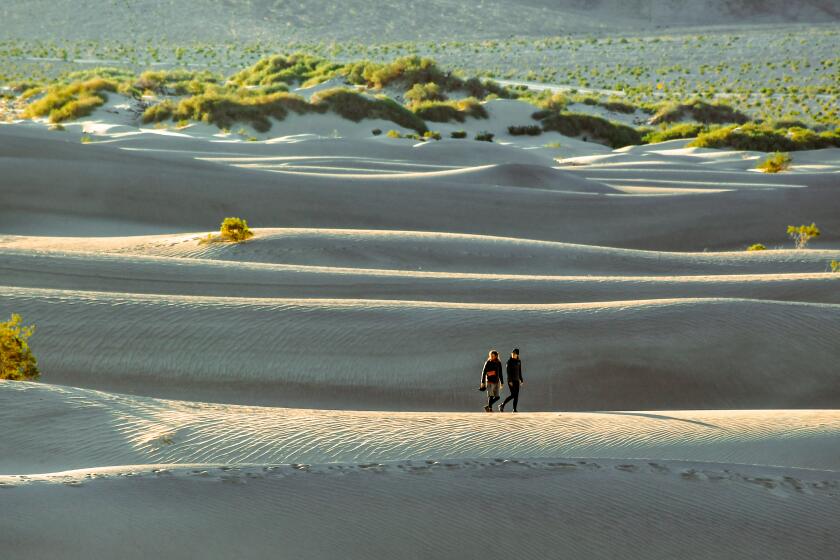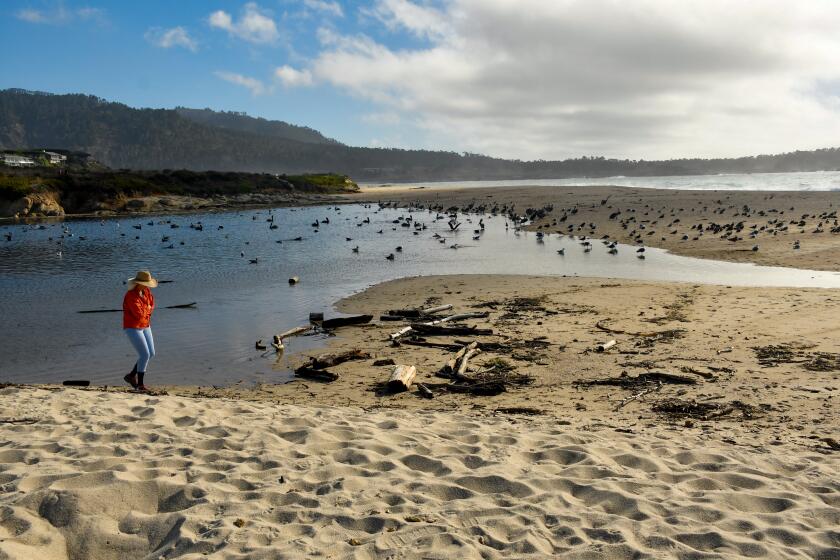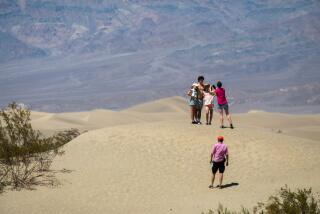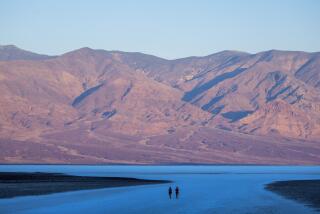Now open in Death Valley: California’s tallest sand dunes
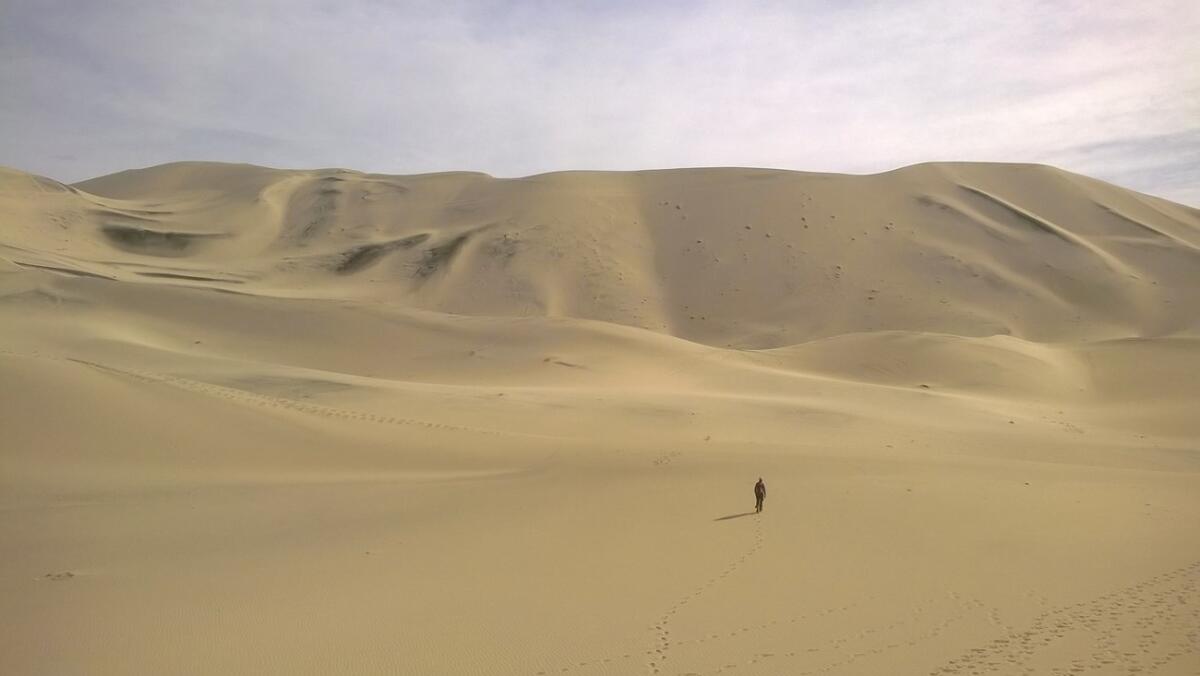
- Share via
Death Valley’s temporary lake, fed by one powerful summer storm, is down to inches as it dwindles in the park’s Badwater Basin. But as it evaporates, other parts of the national park are reopening.
In the aftermath of an Aug. 20 storm that caused widespread flooding and forced the closure of the park, the shallow lake stretched as long as four miles. When Death Valley National Park reopened in mid-October, the water emerged as a main attraction in an area where many roads and trails were still closed for repair.
Two months after a storm that dropped a year’s rainfall in a single day, visitors to the national park are encountering a a strange place made stranger — and more majestic.
Even at its deepest, rangers estimated the lake’s depth at just 2 to 3 feet. But for visitors standing at Badwater Basin, or 5,500 feet higher at the mountaintop Dante’s View, the lake’s reflective qualities led to striking vistas with eerie mountain reflections, especially at dawn and sunset.
Though the vistas are still remarkable, park spokeswoman Abby Wines said Friday, the lake “is probably just a few inches,” even at its deepest.
There’s no telling how fast it will evaporate, Wines said.
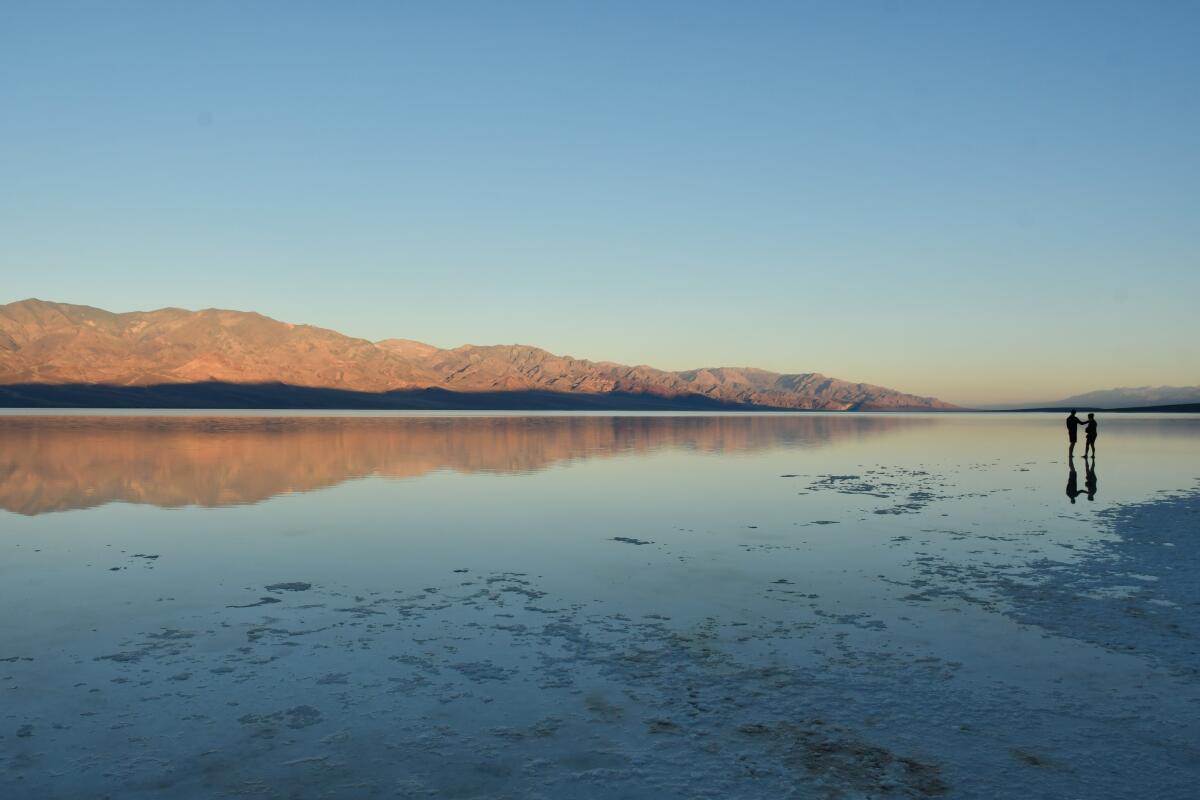
In the meantime, rangers and repair crews have reopened several roads and portions of the park.
On Nov. 1, the park reopened Mud Canyon Road and Daylight Pass, which connects the park to Nevada Highway 374 and Beatty, Nev.
On Nov. 20, the park announced the reopening of its southeast entrance, with Badwater Road providing direct access from Shoshone to Badwater Basin.
Then on Thursday the park reopened access to two remote northern features. One is Eureka Valley, which includes Eureka Dunes, the tallest sand dunes in California, rising about 680 feet above the neighboring lake bed. Starting from the town of Big Pine, the route to Eureka Dunes covers 28 miles of paved road and 21 miles of graded dirt.
Born in the late 19th century as a woodsy haven for bohemian types, Carmel is filled with beauty and luxury. But you don’t have to be wealthy to enjoy a lot of this seaside village.
The other is Saline Valley, which includes a primitive campground and soaking tubs at Saline Valley Warm Springs. The campground and springs are about 35 miles from the nearest paved road and may be unreachable in winter conditions.
Eureka Valley and Saline Valley can only be reached by Big Pine, south of Bishop along U.S. Route 395. From Big Pine, the Big Pine-Death Valley Road is open as far as Eureka Valley, but not beyond. To reach Saline Valley, the only route is from Big Pine over Saline Valley Road’s north pass.
California Highway 190, the park’s main east-west artery, is open throughout the park, with delays possible at multiple road-work locations. Badwater Road is now open for its entire length, as is Dante’s View Road.
Father Crowley/Rainbow Canyon Vista Point remains closed, as do Beatty Cutoff Road, North Highway and many other paved and unpaved park roads.
The park website also notes that though there are a few wildflowers, “the park is not having a major flower bloom.”
The park’s campgrounds are open, except for Emigrant, Wildrose, Mesquite Springs, Thorndike Primitive, Mahogany Flat Primitive and Homestake Primitive.
Travelers should check the park website for weather conditions and road closure updates before visiting.
More to Read
Sign up for The Wild
We’ll help you find the best places to hike, bike and run, as well as the perfect silent spots for meditation and yoga.
You may occasionally receive promotional content from the Los Angeles Times.
